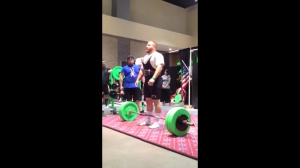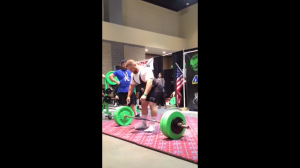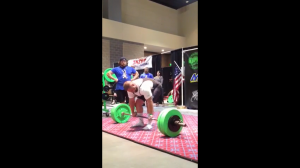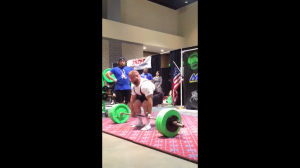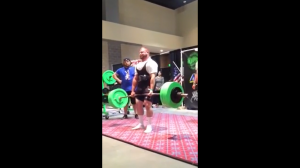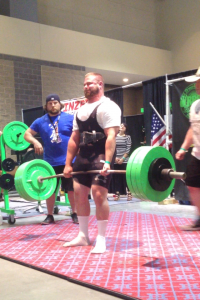Squat technique is going to vary from lifter to lifter. Finding your optimal technique will take some experimentation.
I just wanted to kick this off with a video of me squatting so you can take a look at my stance and technique. This is a video of me squatting 600 at a body weight of 234.
Adam Pine 600 X 1
What is the best squat stance?
Finding your optimal squat stance can be difficult and confusing. You hear different advice from experts all the time. “Squat as wide as possible”. “Raw squatters should use a high bar narrow stance”. Then you see a video of Dan Green squatting raw, using a low bar wide stance. What do you do?

Things to consider when finding your squat stance: are you limited by injuries/mobility, what are you goals/what do you hope to achieve by squatting, your anthropometry. Here are some general guidelines renowned strength coach Dave Tate suggests to start you off.
Guidelines:
- If you have shoulder issues, choose a medium to wide grip.
- If you have a short back, choose a medium to wide stance.
- If you have a long torso, choose a medium stance (the longer the torso, the closer the stance).
- If you have long legs and a long back, choose a close to medium stance.
- If you have long legs and a short back, congratulations. You can squat any way you want.
Beginning with these guidelines and doing what feels natural is a good starting point. Over time you will find ways to make your squat more efficient. The best squatters have years of experience finding their optimal squat technique. Spending time under the bar and learning your weaknesses and how to improve upon them will develop your squat.
Deciding what is your most optimal stance can be a challenging task. Using the appropriate stance for your body type and using the one that feels most natural is a great start. Through experience and repetition you will begin to develop the best squat stance for you based upon your individual needs.
If you are unsure where to begin: I like to begin with a medium stance, a moderate to low bar position on the back, with a close to medium grip on the bar depending on mobility. After some experience under the bar, adjustments can be made.
Learn to identify weaknesses.
Not only muscular weaknesses, but technical weaknesses too. Many lifters jump to the conclusion that they have a muscular weakness when they struggle in a lift, rather than a weakness in their technique. It is important to identify the difference.
Don’t assume because you pitched forward in a squat that you are weak in the lower back and abs. This might be the case, or you could have a technical flaw causing you to pitch forward.
Sometimes it’s a matter of fixing a simple technical issue.
Sometimes it’s just a matter of getting stronger, and bringing up muscular weaknesses. Exercise selection will be crucial for bringing up these specific weaknesses.
It’s important to work the areas you need the most help with. For instance, if you struggle getting out of the hole in a squat like many raw lifters do; paused squats, and pin squats can help. You will want to work movements that help you improve your strength out of the hole rather than towards the lockout.
Here are videos of some of the worlds best Powerlifters, Olympic lifters, and Strongman competitors, to take a look at how they squat.
Mikhail Koklyaev 687.5 X 9
Mikhail Koklyaev 638 X 1 (No Hands!)
Mart Seim 704 X 10
Sam Byrd 825 X 1
Igor Gagin 881 X 4
Idalberto Arranda 616 X 1
http://youtu.be/VcEsmhVag1c
Dan Green 847 X 1
Konstantin Pozdeev 881 X 1
Pat Mendes 800 X 1
Vytautas Lalas 770 X 5
http://youtu.be/Ha6J8O7sbJw
Kirk Karwoski 836 X 1
Mike Tuchscherer 705 X 4
Ray Williams 909 X 1
Don Reinhoudt 934 X 1
Chad Wesley Smith 937 X 1
Eric Lilliebridge 985 X 1
Derek Kendall 1005 X 1
Andrey Malanichev 1014 X 1
Takeaway:
– Hand position varies. Both neutral and extended wrist positions were used. A majority of lifters favor an extended wrist position.
– The hand width and finger position varies. Lifters go anywhere from as wide to narrow as possible and anywhere in between. Lifters will wrap all the fingers around the bar, all but the thumb, two fingers, and other variations.
– You want to pull your elbows in and forward to flex your lats. A relatively narrow grip on the bar is desirable for upper back tightness, it is not essential. Drive your upper back as hard as you possibly can into the barbell, creating as much tension on the bar as possible.
– Fill your entire torso with air, beginning with your lower back and flex your abs. If you are trying to beat Andre Malanichev’s squat, do you want to fill just your belly or chest up with air, or the whole torso?
– Move at your hips , like you’re sitting down on the toilet.
– Spread the floor apart, and drive up explosively.
– Bar positions vary from high, moderate, to low. Many of these squatters are moderate to low bar.
– Stances vary from wide, medium, to narrow.
– If you are new to squatting, learn and master a style, but don’t feel you are married to one technique if it doesn’t work for you. If your technique works well, stick with it; don’t feel you have to change it because others do something different. It is important to find what technique is optimal for you.
If you are serious about improving your squat looking for ways to better your program and technique, send me an email at: adamnpine@gmail.com and put “SQUAT QUERY” in the subject line.




